Yellow roses: description and cultivation of the best varieties
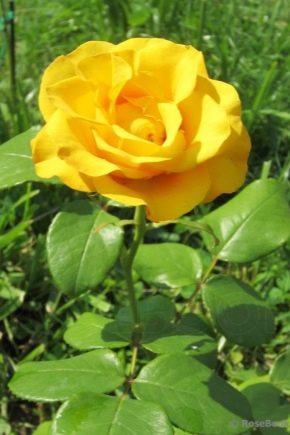
Yellow roses are a real dream for many gardeners and summer residents who do not want to put up with boredom and monotony in their flower beds. It is the plants with inflorescences of a sunny, peach, orange hue that are of greatest interest to modern breeders. Even at the time of the appearance of the first collections, yellow roses were incredibly rare. Today they are much more common, delighting with their beauty not only experienced flower growers, but also amateurs who want to enjoy their splendor in their garden.
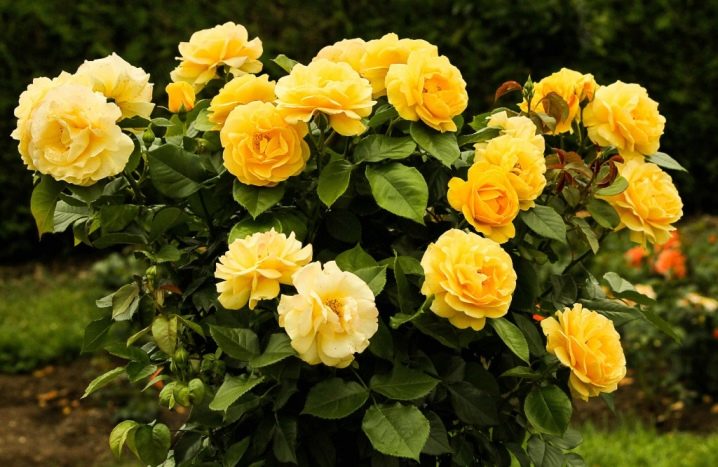
Peculiarities
Why are yellow roses considered quite difficult to grow? The fact is that the ancestor of all varieties of this plant is Foetida Persiana, almost all offspring of which are susceptible to the development of numerous diseases, including black spot... When other varieties were bred on its basis, the tendency towards reduced disease resistance persisted. It was only in the last generations of flowers that this unpleasant heredity was overcome. But classic and hybrid tea varieties of plants still require maximum attention when growing.
Color instability is another challenge in growing yellow roses.
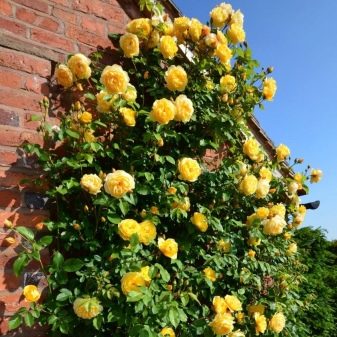
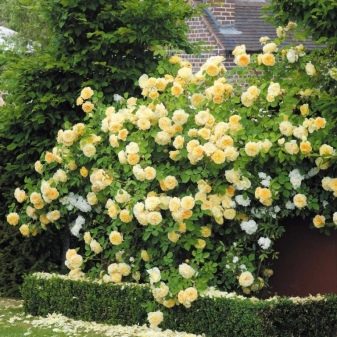
In orange varieties, under the influence of sunlight, pink pigmentation begins to appear, and in a particularly hot year, a rather rapid repainting of the flower garden can be observed. A striking example of such a change in shades can be called the Antao Chippendale variety, the buds of which have a rich orange color, and the blossoming flower takes on the shade of dawn.
Yellow roses are very sensitive to soil composition. In addition, they can change color even under the influence of weather factors, acquiring a pink tint to the tips. The main features of Michurin's “Mother of Yellow” roses and other popular species are recommended by breeders to take into account when creating rose gardens in order to avoid variegation.
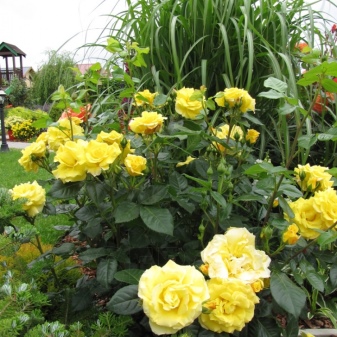
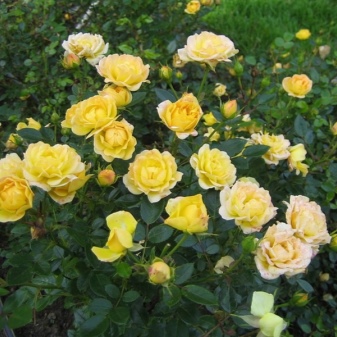
Popular varieties
The best varieties of yellow and red-yellow roses with a description of their capabilities and features really deserve attention. Usually, all plants are divided into classic English, modern breeding, South Asian. The geography of growth is not a fundamental factor, but influences the general trends in the breeding of varietal plants. Belonging to a certain group also matters.
Climbing, hybrid tea, large-flowered, dwarf or long-stemmed, yellow roses retain their splendor until late autumn, and serve as a real decoration of the flower bed. Let's consider their best varieties in more detail.

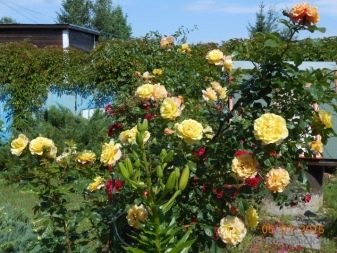
Yellow
- Legendary rose variety "Mother of the Yellow" Michurin got its name from the most illustrious breeder. Of course, floriculture was far from his main business, but at the end of the 19th century, this indefatigable experimenter was carried away by the breeding of flowers that have a stable color. The cultivars Persian Yellow and Lutescens were taken as a basis. But after the revolution he never returned to growing roses, today it is almost impossible to find this flower in its original form.
- Kerio. Among the modern roses, which have an impeccable sunny shade, the Dutch hybrid tea variety "Kerio" is especially loved by gardeners. Flowers belonging to the cut variety have a high center, an aesthetic dense bud, and a rich golden hue.A fully opened flower acquires an orange border around the edges of the petals. Rose "Kerio" has a tall shrub with rich green foliage and medium thorniness. The decorativeness of the flowers is emphasized by rich greenery.
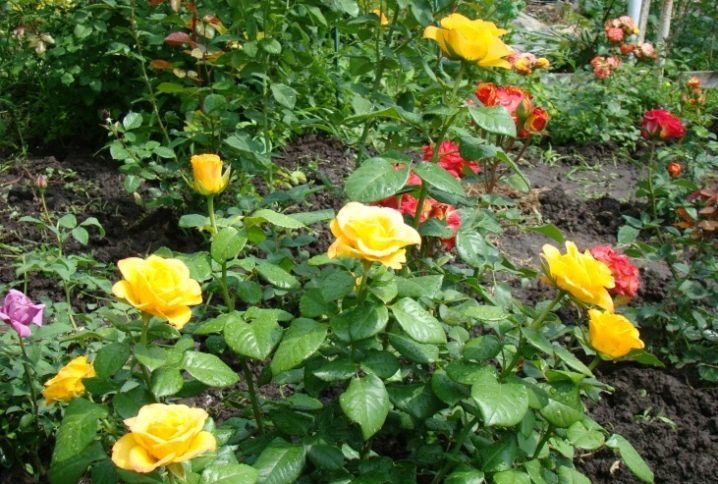
- Golden Gate. Among the climbing varieties, the Golden Gate roses deserve special attention. They are suitable for creating decorative arches in the garden due to the height of the shoots up to 3.5 m, they have large flowers, the edges of which fade in the sun almost to a white hue. Terry petals look very impressive and magnificent.
Since the variety was recently bred, in 2006, it has the characteristic resistance of modern roses to frost and common plant diseases.
- Landora. Intense yellow color, decorative effect of the bud. The Landora rose variety is a hybrid tea, perfect for use in summer cottages and garden plots. An unpretentious plant is protected from most common diseases, it is not afraid of frost. Beautiful tight buds of a sunny golden hue have an elongated shape, grow on a straight stem, the height of which reaches 120 cm.
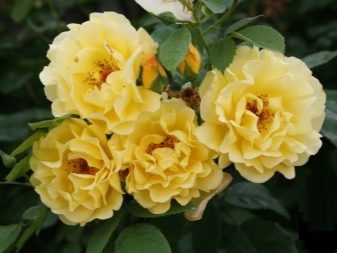
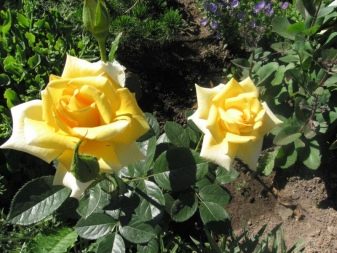
- Alsmeer Gold. Luxurious rose for cutting a delicate creamy yellow shade Alsmeer Gold belongs to varieties that grow on a straight high stem up to 1 m in length. The classic flower looks spectacular in bouquets and floral arrangements. Dark green foliage favorably sets off the nobility of the shade of the buds. The variety is characterized by a small number of thorns.
- Lichtkonigin Lucia. The type of roses known since 1966, Lichtkonigin Lucia, belongs to scrubs growing on strong and rather tough stems. They grow up to 150 cm in length. The flowers have a double structure, rich golden color, with a transition to pale cream along the border of the petal. The bush continues to bloom throughout the season and has an exquisite aroma. Among the features of the variety, winter hardiness can be distinguished.
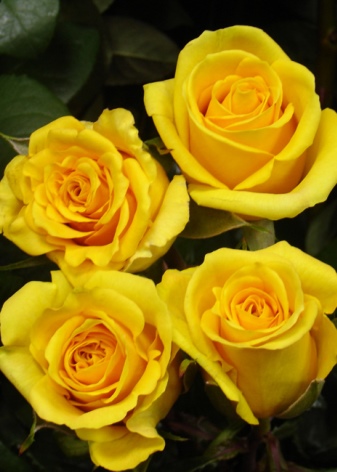
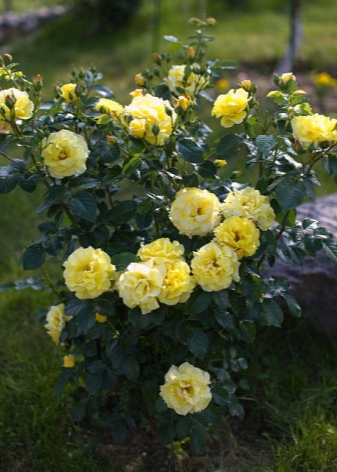
- Graham Thomas. Since 1983, one of the most popular varieties of English roses with a persistent creamy yellow color is Graham Thomas. Large double flowers have a cup-shaped shape, exude a sweet aroma, the bush is quite branchy, keeps its shape well. The variety is characterized by straight stems up to 1.4 m high.
- Sonnenschirm. Sunny variety with a rounded terry cup shape - Sonnenschirm belongs to the category of ground cover plants. The rose retains its bright, saturated color for a long time, it looks very decorative.

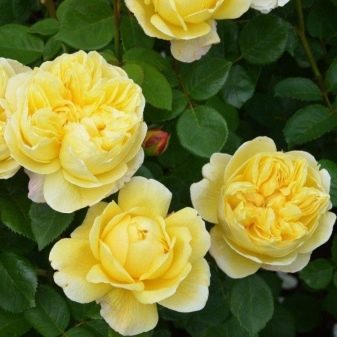
- Gina Lollobrigida. Named after the great Italian actress, the rose was bred selectively in 1989 and belongs to the species of the hybrid tea group. This variety of rose bushes is characterized by the formation of a bud with a dense core, and a lush bowl at the edges. The total size of the inflorescence is up to 13 cm.
- Mabella. The Mabella variety is highly valued by fans of plant growing for its versatility - the bush grows well both with a stem and in a group. Can be used for cutting, greenhouse cultivation. The height of the stems reaches 1.2 m, the flowers on the surface of the branches are lemon-yellow, have a double structure, the petals have a pointed shape, a delicate aroma. Among the advantages of this rose, one can note resistance to the effects of cold weather, fungal infection.

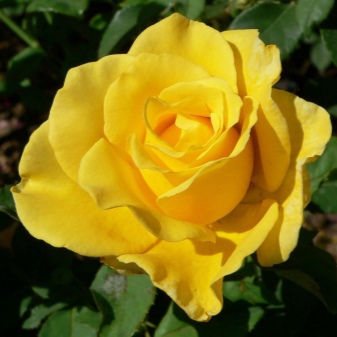
All these varieties are able to grow in the open air even in the conditions of the Russian central zone, are decorative, and have a stable preservation of a rich yellow color gamut.
Yellow-red
Bright flowers with a double color - orange or pink edges, and a golden core, look very impressive and decorative. Moreover, such buds look especially expressive in a rose garden or on a bush. There are also varieties rich in anthocyanins, which have red leaves inside - this is not an anomaly, but the norm.
Among the popular varieties of roses, in which orange and pink shades prevail on the outside of the petals, the following varieties can be noted.
- Gloria day Is a hybrid tea variety with excellent decorative properties.Large buds with a yellow-orange core, with red edges, look exquisite, suitable for creating bouquets. The straight shoots of the rose are erect, reaching a height of 120 cm, the rich foliage of the foliage perfectly complements the charm of the flowers. But this variety is quite capricious, and requires reliable protection from cold weather and disease.
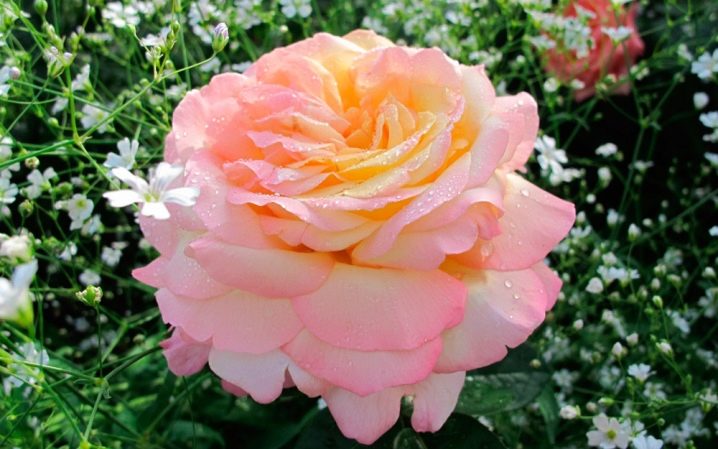
- Hummingbird. Small dwarf roses growing on compact bushes up to 35 cm high. The bright yellow center of a double flower is surrounded by contrasting petals with a rich orange tone. The buds grow in clusters, forming inflorescences of 3-5 pieces, continue their flowering until mid-autumn.
- Tequila. A rose that blooms beautifully from mid-summer to autumn, allowing you to simultaneously enjoy the buds and lush blossoming flowers. The shade of the petals is deep orange, fading into apricot and even white over time. The variety has a semi-double structure, a beautiful color gradient. A distinctive feature of the variety is its excellent adaptation to the most difficult growing conditions, it is not afraid of diseases.

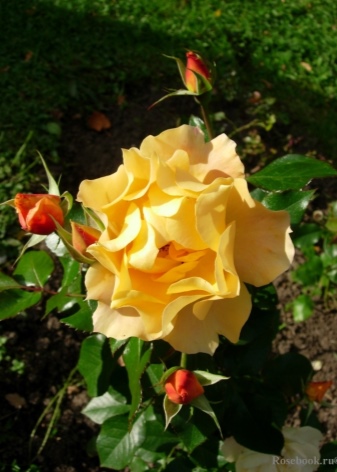
- "Geisha". A yellow-red terry variety that keeps the middle dense and the edges lush. Differs in the ability to keep freshness in cut form for a long time. The aroma is rather weak, not pronounced. A large flower reaches 12 cm in diameter, the edges are colored paler than the core. The bushes grow up to 1 m in height, the stems are thick, strong, the hybrid tea variety is resistant to cold weather, does not require additional covering.
- Rugelda. It is distinguished by a scarlet shade of buds, in which, when opened, a yellow core with a red border around the edges is found. The shrub plant reaches a height of 2 m, is distinguished by a significant number of thorns, and is suitable for the formation of decorative arches.
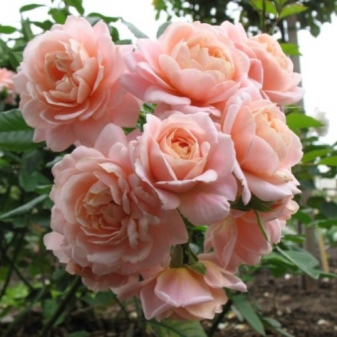

Luxurious rose flowers can diversify the magnificent equipment of the rose garden, make it more expressive and original.
Correct fit and care
In order for a yellow rose to take root in the garden, it needs to be given maximum attention. For planting, you should choose the autumn months, from September to mid-October. The purchase of planting material should also be carried out on the eve of planting, choosing the most powerful seedlings. It is recommended to place the bushes in sunny areas, away from bushes and trees that give shade. Avoid lowlands, places with a high groundwater table, areas open to the wind. The best solution would be a prepared flowerbed with slightly acidic soil (up to 6.5 PH), drained, saturated with minerals.

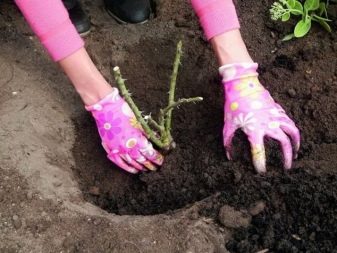
Planting in containers is done after abundant watering, the roots are trimmed, the shoots are shortened. The depth of the planting pit should be equal to the length of the roots + 10 cm, when planting, the graft should be located at a depth of 3-4 cm. After planting, the soil is compacted around the plant, a roller is formed to prevent water outflow. In the first 10 days, the plant needs protection from the sun, watering on the second day.
During the growth of the rose bush, you should regularly pinch the ends of the branches, the buds should be torn off by hand until mid-summer. It will require pruning the stems, watering regularly, loosening, removing weeds and feeding.
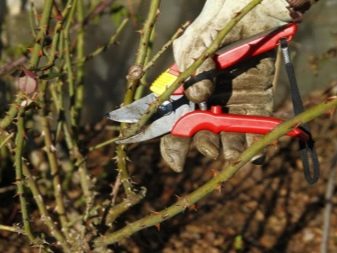
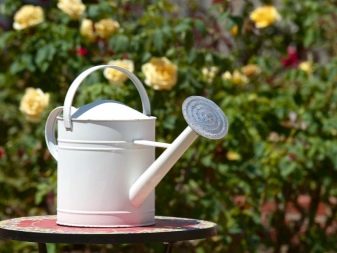
Diseases and pests
Yellow roses, especially their classic varieties, are susceptible to the development of diseases. They are especially often detected when the plant is planted in too shady or swampy areas. As a rule, the bush is affected by fungal diseases of rust, black spot, downy mildew. With a lack of trace elements, chlorosis occurs.
Rose bushes can attract a wide variety of pests, capable of destroying parts of the plant itself or sucking juices, depriving it of its vitality. Aphids, scale insects, various mites can disrupt the life cycle of a plant. Damage to stems and leaves is produced mainly by caterpillars, sawfly beetle larvae.
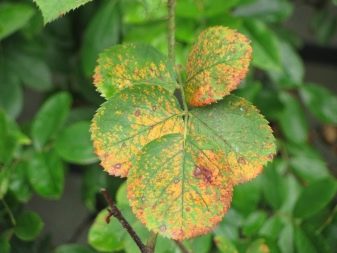
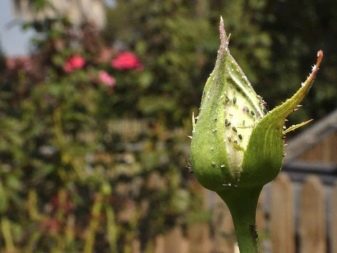
Application in landscape design
In landscape design, luxurious yellow roses are used to form arches and other compositions in the space of the site. Low-growing - dwarf varieties are suitable for decorating flower beds. In the front part of the landscape composition, it is worth placing hybrid tea roses of remontant species, breaking a separate lush flower garden.
Floribunda can be used to create elegant lawn medallions, which are placed along the edges, in the form of edging.
In the presence of gazebos, pergolas, trellises, you can plant climbing yellow varieties of roses that look especially decorative and luxurious. Here they should be supplemented with vines and other climbing plants.
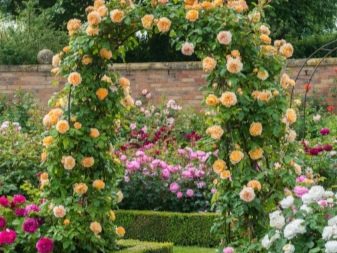
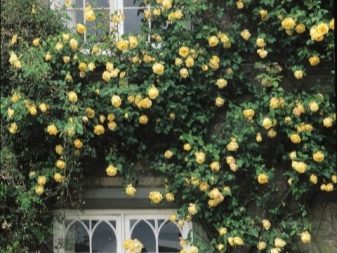

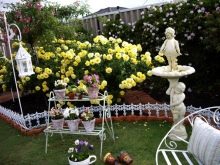
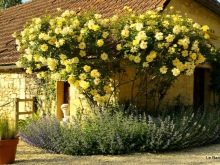
For how a yellow tea rose bush looks like, see the next video.

































































































The comment was sent successfully.